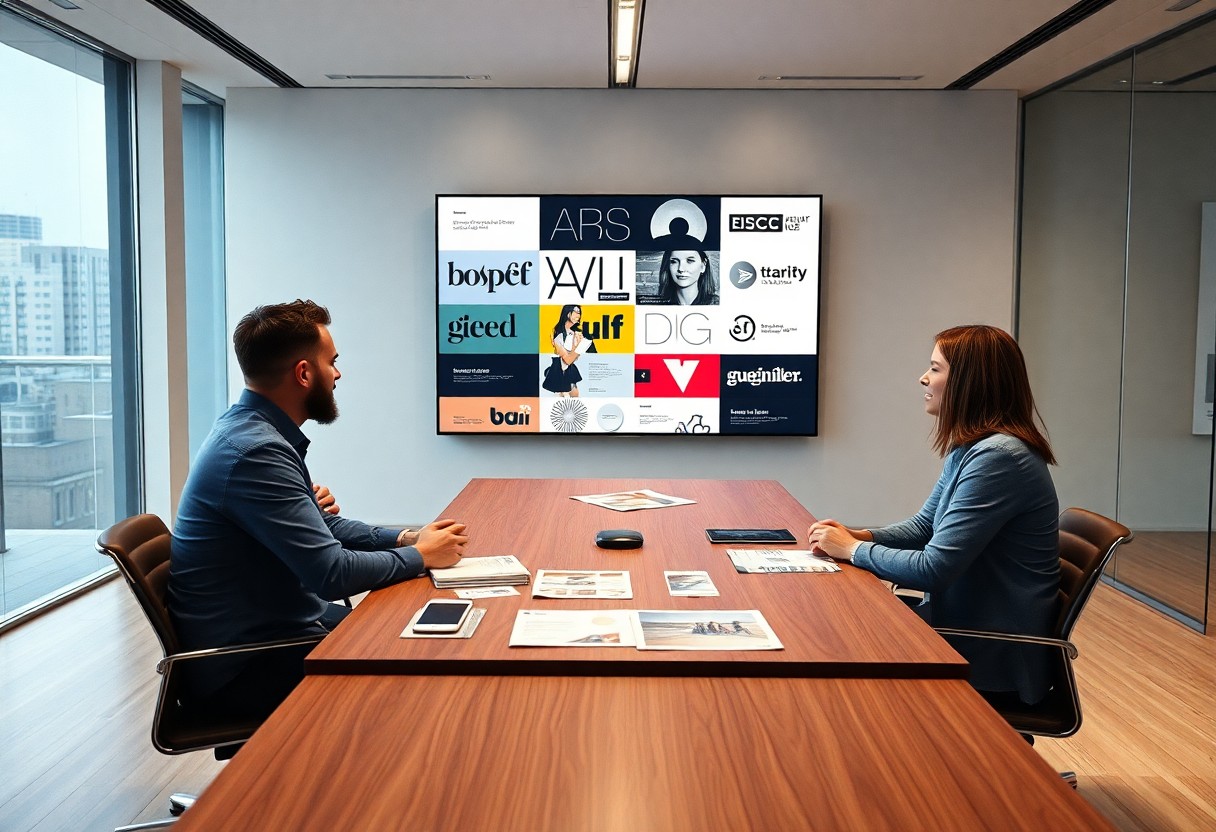Branding plays a pivotal role in how your audience perceives you, and choosing the right graphic design style is vital to reinforce that perception. With numerous styles available, it can feel overwhelming to pick one that aligns with your brand’s identity and values. In this guide, you will learn practical strategies to help you select a graphic design style that not only resonates with your target audience but also effectively communicates your brand’s message. Let’s dive in and explore how to make informed design choices that will elevate your brand.
Decoding Your Brand’s Essence
Decoding your brand’s essence involves a deep examine what truly defines your business. This process helps you uncover the heart and soul of your brand, guiding your decisions about design style. By understanding the core values, messages, and emotional connections that resonate with your audience, you pave the way for creating a visual identity that reflects who you are and what you stand for.
Identifying Core Values and Message
Your brand’s core values and message act as the foundation for its identity. Take the time to articulate the principles that guide your business—these could be innovation, sustainability, community, or quality. Formulate a message that encapsulates what you want to communicate to your audience. For instance, if sustainability is a key value, your design style should evoke earthy tones and natural textures to reinforce that commitment visually.
Analyzing Target Audience and Market Position
An effective graphic design style resonates with your specific audience while highlighting your unique position in the market. Evaluate who you are trying to reach and examine their preferences, needs, and expectations. With detailed demographic data, such as age, location, and interests, you can tailor your design choices to match your target audience’s tastes. For example, if your brand targets millennials, vibrant colors and minimalistic designs may align better with their preferences compared to traditional, muted aesthetics.
Delving into your target audience further offers insights into their preferences and pain points. Use surveys, social media analytics, and customer feedback to gather information about what appeals to them. Knowing your competitors’ positioning will also help you differentiate your brand effectively. For instance, if your brand is in a crowded market of tech start-ups, identifying gaps in design styles they are using can inform how you craft a distinctive visual identity. By aligning your graphic design with the desires and expectations of your audience, you not only attract attention but also foster deeper connections that drive engagement and loyalty.
The Power of Visual Language
Visual language is a fundamental tool for communicating your brand’s identity and values. It transcends the limitations of words by conveying messages through images, colors, and styles that resonate with your audience on a deeper emotional level. A well-chosen design style can encapsulate the essence of your brand, instantly drawing in potential customers and fostering a connection that textual descriptions alone may struggle to achieve. Ultimately, harnessing the power of visual language allows you to create a narrative that speaks directly to your target market.
Exploring Design Styles: Aesthetic vs. Functional
Aesthetic and functional design styles serve different purposes in the graphic design realm. While aesthetic styles focus on the visual appeal and evoke a sense of beauty and creativity, functional styles prioritize usability and practicality. Striking a balance between these two approaches ensures that your brand’s graphics not only grab attention but also effectively direct users towards your intended actions, whether that be making a purchase or exploring more of your offerings.
How Different Styles Evoke Emotions and Reactions
Design styles have the unique ability to evoke specific emotions and reactions through color, typography, and composition. For instance, bold colors like red can create urgency and excitement, while softer pastels may convey calmness and approachability. Using playful fonts can instill a sense of fun, whereas sleek, modern fonts can suggest professionalism and reliability. By thoughtfully selecting a design style, you can manipulate these elements to influence how your audience feels about your brand, ultimately guiding their purchasing decisions and loyalty.
Consider the impact a minimalist design has compared to a vibrant and busy layout. A minimalist style often creates a sense of elegance and sophistication, appealing to consumers looking for high-end products, whereas a vibrant and intricate design can evoke excitement and creativity, attracting a younger demographic. Tailoring your design style to align with the psychological triggers associated with different aesthetics can significantly enhance your brand’s effectiveness in communication, resulting in stronger emotional connections with your audience.
Aligning Design Style with Brand Identity
Choose a graphic design style that reflects the core values, mission, and personality of your brand to create a cohesive identity. A well-aligned style not only enhances brand recognition but also resonates emotionally with your target audience. Whether your brand is playful, sophisticated, or edgy, your design should embody that essence and maintain consistency across all touchpoints, including digital platforms, packaging, and promotional materials.
Case Studies: Successful Brand-Design Alignment
Examining brands that have successfully aligned their graphic design with their identity reveals the powerful impact of a strategic approach. Here are some notable examples:
- Apple
- Coca-Cola
- Airbnb
- Blueland
- Coca-Cola
Pitfalls to Avoid When Selecting a Style
Selecting a design style haphazardly can lead to misrepresentation and confusion among your audience. Consider trends that may quickly become outdated or styles that clash with your brand’s core message. It’s vital to avoid choosing a design solely based on personal preference without considering your target demographic and competitive landscape. A lack of thorough research may result in a disjointed visual identity that fails to connect with consumers effectively.
Crafting Your Unique Style Blueprint
Your unique style blueprint serves as a roadmap to align your design choices with your brand’s essence. Start by listing your brand’s core values, target audience, and fundamental messages. Identify elements that resonate with your brand persona, whether it’s minimalist elegance or bold vibrancy. This blueprint will guide your design decisions, ensuring every visual component you create consistently reflects your brand identity, ultimately enhancing recognition and connection with your audience.
Steps to Blend Elements of Multiple Design Styles
To successfully blend multiple design styles, begin by analyzing the strengths and characteristics of each style you wish to incorporate. Create a mood board that illustrates these elements and how they complement one another. Explore color palettes, typography, and imagery that support your brand messages. Maintain a balanced approach, ensuring one style doesn’t overpower another. This thoughtful combination can lead to a distinctive design that stands out in a crowded market.
Testing and Iterating Your Design Choices
Testing and iterating on your design choices is paramount in fine-tuning your graphic style. Gather feedback through surveys or focus groups, and observe how your target audience responds to various elements. Use analytics to track engagement and effectiveness of your graphics across different platforms. This insightful data will guide you in making informed adjustments, ensuring your design not only reflects your brand essence but also resonates with your audience.
Consider A/B testing your designs on social media or your website. By randomly displaying different graphic styles to segments of your audience, you can gather quantitative data on which designs capture attention and drive engagement. For instance, if a vibrant, playful graphic receives more clicks than a minimalist design, you can adjust your approach accordingly. Continual feedback loops and a willingness to adapt based on audience preferences can significantly enhance your brand’s visual impact and effectiveness over time.

Collaborating with Designers: Best Practices
Effective collaboration with designers can enhance your brand’s visual appeal and messaging. By establishing a productive working relationship, you can unlock creative potential that resonates with your audience. Understanding best practices for collaboration can streamline the design process, ensuring your vision translates into compelling graphics that elevate your brand identity.
Setting Clear Expectations and Objectives
Defining clear expectations and objectives before starting a design project ensures that both you and your designer are aligned. Outline the scope of the work, timeline, and specific deliverables to avoid miscommunication. By providing a detailed project brief, you help your designer understand what success looks like, leading to more focused creative output.
Communicating Your Brand Vision Effectively
Your brand vision should be the guiding star throughout the design process. Articulate your brand’s essence, including its mission, values, and target audience, to give your designer a solid foundation. Share existing brand materials, such as logos or color palettes, to provide visual context. Engaging in an open dialogue about your preferences and inspirations can also foster creativity and innovation.
Utilizing mood boards and visual references can significantly enhance communication around your brand vision. These tools allow you to showcase the aesthetic you aspire to, helping your designer visualize the final outcome. Discuss design elements like typography, imagery, and color schemes that resonate with your brand’s personality. Keeping lines of communication open throughout the project will encourage feedback, adjustments, and a collaborative atmosphere—crucial components for achieving a cohesive design that aligns with your brand’s identity.
Summing up
Summing up, selecting the right graphic design style for your brand involves a careful consideration of your target audience, brand identity, and the emotions you wish to evoke. Analyze your competitors and current design trends to find inspiration that aligns with your vision. Experiment with various styles, but ensure consistency across all platforms to build recognition. Ultimately, the right style will effectively communicate your brand’s message and values, fostering a strong connection with your audience.

